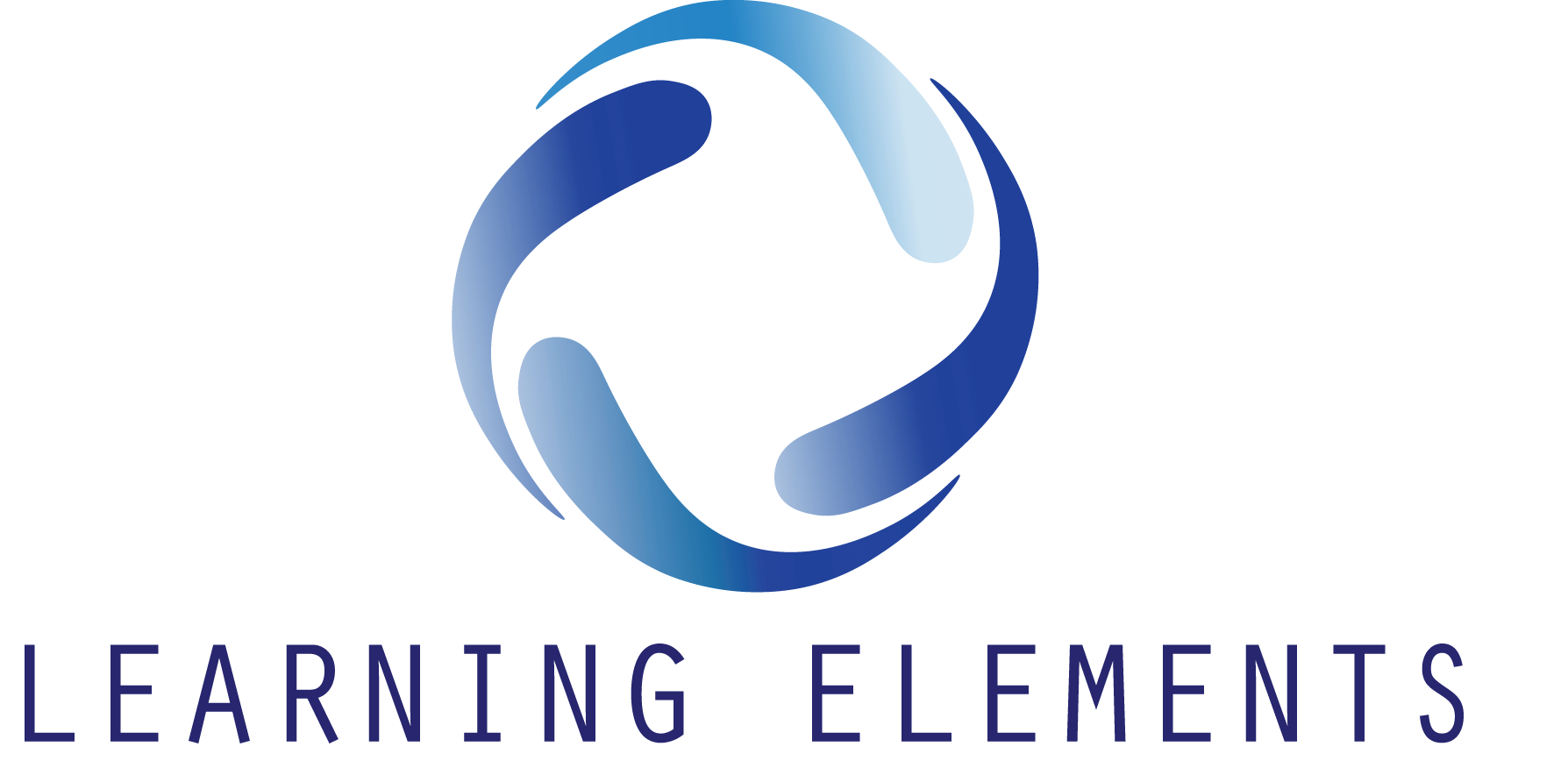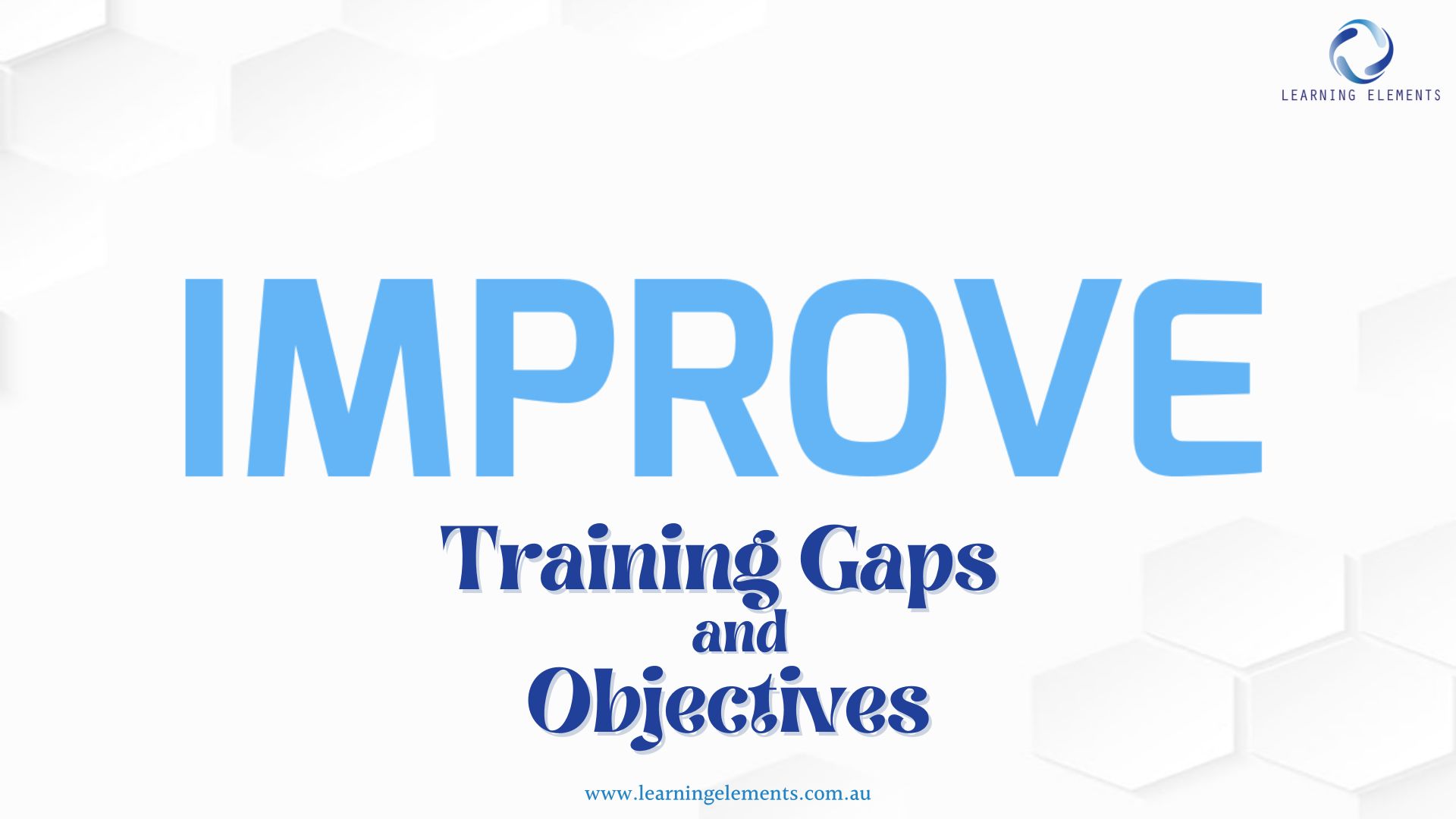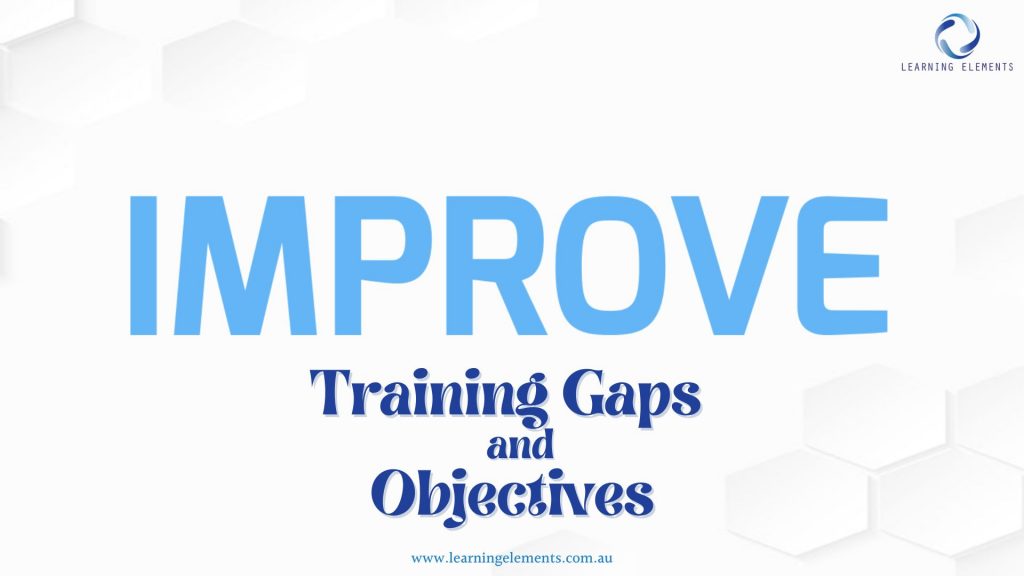Training Gaps and Objectives
Gaps versus Objectives
Training that addresses gaps and objectives is effective when the gaps and objectives have been clearly defined. A broad or general training gap, in my experience, can not form the basis of a training plan. Why? It won’t address specific issues, causes and impacts. The same goes for training objectives.
A training gap is a variance between a desired or required behaviour or level of performance and actual behaviour or performance. This gap can occur on an individual, team or organisational level. One must address it accordingly, ensuring it aligns with business goals.
Auditing skills, engagement/motivation, and knowledge of specific tasks and job requirements can identify training gaps. Using a job description when KPIs have not been identified is a good starting point for identifying gaps.
Training objectives are the intended measurable outcome that your learners will achieve once they’ve finished a course. They should detail the information that will be acquired and what learners will be able to accomplish through learning this information.
learnupon.com
Training objectives should be defined when training gaps have been identified and a plan and outline have been developed.
-Bloom’s Taxonomy
The six main categories of the framework include – Remember, Understand, Apply, Analyse, Evaluate, and Create. Each category will relate to specific actions. Some examples are: to recall, to describe, to organize, to critique, and to create. The actions that form the objective need to be measurable in order to be effective.
Identifying Training Gaps: A Key to Effective Training
Training programmes can only be effective when they address specific skills, competencies, and knowledge gaps. Identifying such is crucial in developing a targeted and impactful training plan. By conducting a thorough analysis of the existing performance levels and comparing them to the desired outcomes, organisations can pinpoint the areas that require improvement. This analysis can encompass skills, engagement, motivation, and job-specific knowledge. With that, organisations can tailor their training initiatives to address these areas and bridge the performance divide.
Training Gaps and Objectives: Bridging the Performance Divide
Training objectives are vital in bridging the gap between current performance levels and desired outcomes. Once the organisations identify the training gaps, they can establish clear, measurable objectives that outline the intended learning outcomes. These objectives serve as a roadmap for both the trainers and learners, providing a clear direction and purpose for the training programme. By aligning the training objectives with the identified gaps, organisations can ensure that the training addresses specific issues, causes, and impacts. By bridging the performance divide through well-defined training objectives, organisations can enhance the effectiveness and impact of their training programmes.
Facilitating a training gaps analysis will take time and planning. Get in touch with us at info@learningelements.com.au to discuss how we can work with you. We work with small business owners and support HR teams in larger businesses to uncover training needs and improve results.



